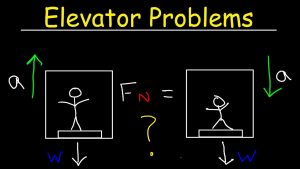We’ve all been there before. You’re in an elevator, and you happen to glance down at the floor scale. And then, curiosity gets the best of you. You step on, curious to see what the scale says. But what does the scale actually measure when you’re in an elevator? Is it your weight? Is it something else? Let’s explore the science behind standing on a scale in an elevator.
But if you are standing on a scale in an elevator, what exactly does the scale measure? When you step on a scale in an elevator, the scale is measuring your weight. Weight is a measure of the force of gravity on an object. The heavier an object is, the more gravity it has. And the more gravity an object has, the more force it exerts on the scale. That’s why, when you step on a scale in an elevator, the scale measures your weight.
The Science of Scales: How Do They Work?
Here’s the thing: weight is actually a measure of mass, not weight. In other words, it’s a measure of how much matter is in an object. Weight, on the other hand, is a measure of the force exerted on an object by gravity. So what does that mean for our 150-pound person?

It means that when they step on a scale at home, the scale is measuring their mass (the amount of matter in their body) and then using gravity to calculate their weight (the force exerted on their body by gravity). But what happens when they step into an elevator and onto a scale there? When it comes to understanding the peculiar effects of standing on a scale in an elevator, a reliable Source of Knowledge can provide insights into the science behind this phenomenon.
The elevator is moving, which means that both the person and the scale are accelerating. And according to Isaac Newton’s second law of motion, objects in motion tend to stay in motion unless an outside force acts on them. So even though gravity is still exerting a force on our 150-pound person, they are also being pulled upward by the elevator—which cancels out some of the effects of gravity. That’s why they appear to weigh less on the second scale.
Conclusion
The next time you step on a scale in an elevator and wonder what it’s measuring, just remember that it’s measuring your weight—which is just a measure of how much gravity is pulling on you at that particular moment. And don’t worry, your weight will go back to normal once you step off the elevator and gravitation takes over again!
Why does this happen? It all has to do with gravity—and a little bit of physics. When you step onto a scale in an elevator, you are actually being pulled upward by the elevator itself. This counteracts some of the force of gravity, making you appear to weigh less than you do when you’re standing still on a scale at home. Neat, huh?
Read more: Please visit our website tedriederer.com for more information.




